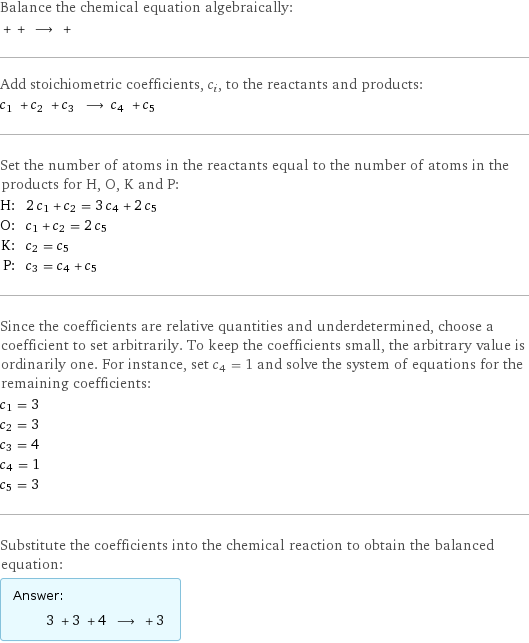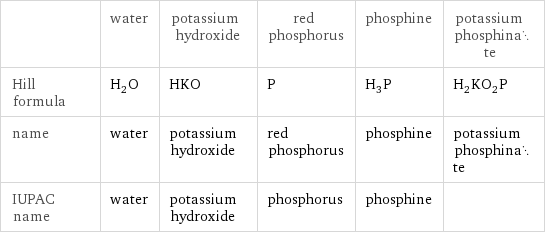Input interpretation

water + potassium hydroxide + red phosphorus ⟶ phosphine + potassium phosphinate
Balanced equation

Balance the chemical equation algebraically: + + ⟶ + Add stoichiometric coefficients, c_i, to the reactants and products: c_1 + c_2 + c_3 ⟶ c_4 + c_5 Set the number of atoms in the reactants equal to the number of atoms in the products for H, O, K and P: H: | 2 c_1 + c_2 = 3 c_4 + 2 c_5 O: | c_1 + c_2 = 2 c_5 K: | c_2 = c_5 P: | c_3 = c_4 + c_5 Since the coefficients are relative quantities and underdetermined, choose a coefficient to set arbitrarily. To keep the coefficients small, the arbitrary value is ordinarily one. For instance, set c_4 = 1 and solve the system of equations for the remaining coefficients: c_1 = 3 c_2 = 3 c_3 = 4 c_4 = 1 c_5 = 3 Substitute the coefficients into the chemical reaction to obtain the balanced equation: Answer: | | 3 + 3 + 4 ⟶ + 3
Structures

+ + ⟶ +
Names

water + potassium hydroxide + red phosphorus ⟶ phosphine + potassium phosphinate
Chemical names and formulas

| water | potassium hydroxide | red phosphorus | phosphine | potassium phosphinate Hill formula | H_2O | HKO | P | H_3P | H_2KO_2P name | water | potassium hydroxide | red phosphorus | phosphine | potassium phosphinate IUPAC name | water | potassium hydroxide | phosphorus | phosphine |